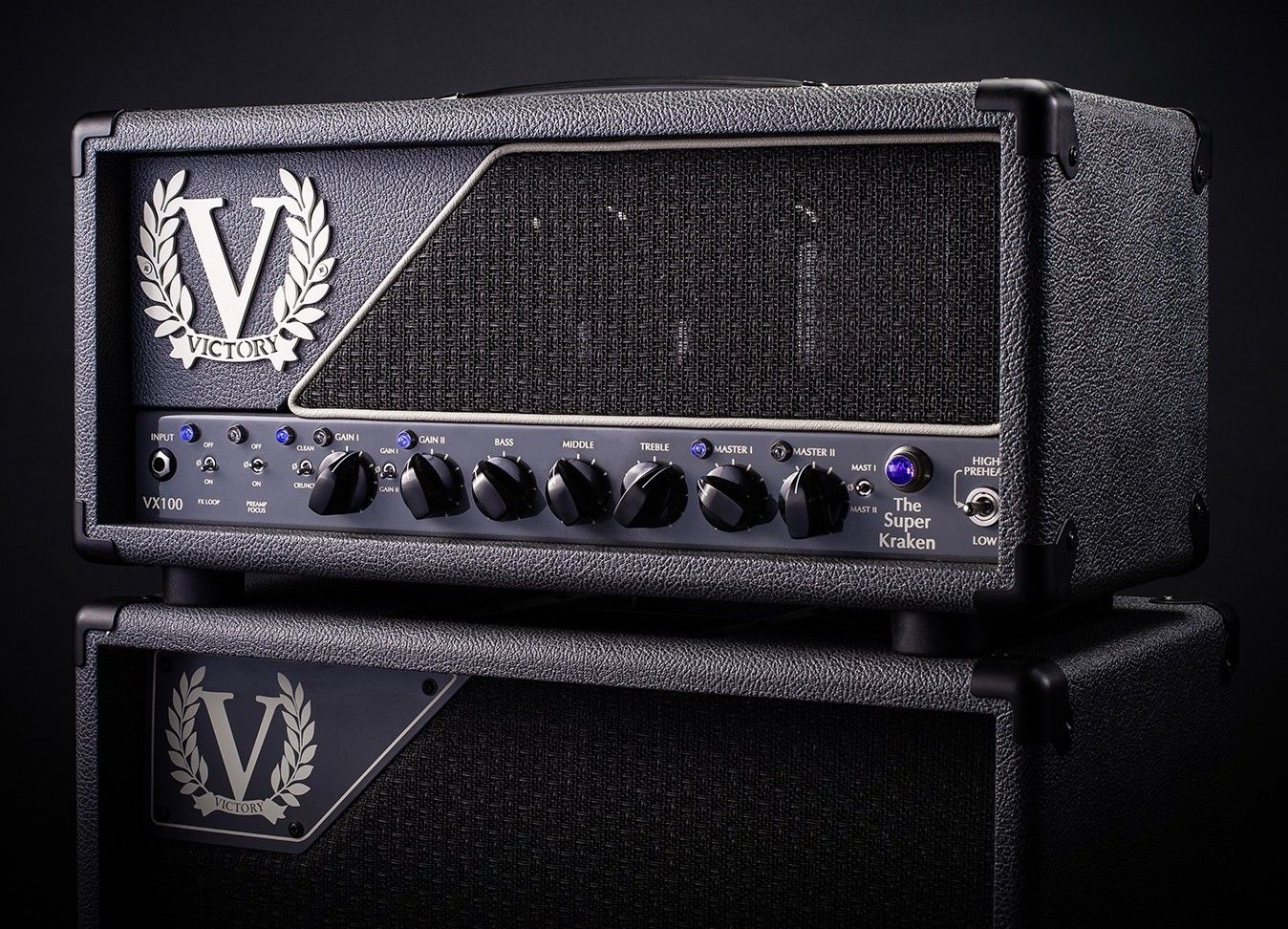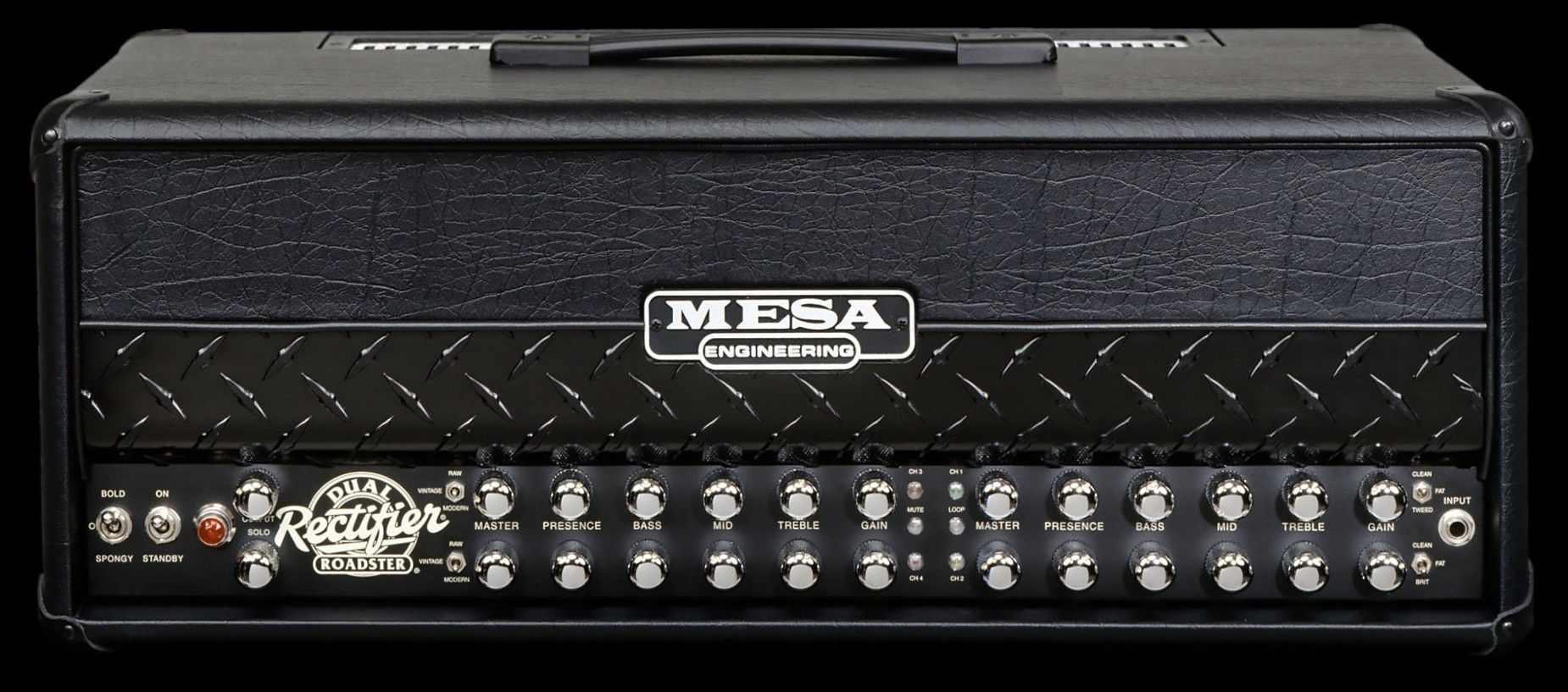The paralysing limitations of having access to every guitar amplifier in the world.
I admit, the last few months have been a bit of a struggle with the Kemper. Not because it sounds anything less than superb, but simply because the profiles aren’t versatile enough once I’ve found ‘the one’.
Once I’ve settled on a profile, I’m stuck with it because no other profile comes close. That makes me feel a little uneasy as I’d like to feel a bit more freedom than that. The ability to tweak the EQ in a meaningful, not approximated, way has been increasingly more appealing to my immediate needs as a musician and creative.
Enter the Kraken

Victory Super Kraken — what a gorgeous looking amplifier.
In January, Rabea Massad (one of my favourite guitarists of the YouTube generation) released a video of the new Victory Super Kraken head and it sounded great in his demo’s and had a vast featureset that appealed to my needs. I had a moment of weakness and ordered that and the new Suhr Reactive Load I.R. load box, so I could see if it could replace my Kemper.
It sounded great, albeit a bit too dark for my tastes, and in that moment, I realised how much I relied upon the signature Mesa Rectifier tone and how much a part of my sound it was. The Kraken couldn’t match what was in my head.
I ended up sending it all back in the end and put it down to a learning experience that “nothing was as good as the Kemper.”
However, it got me thinking. This was the first time I’d heard a high gain amp have a tight and defined bass response with Impulse Reasponses (IRs). This was interesting to me as my first real foray into IRs, back in 2016, ultimately failed me when I tried them with my old Dual Rectifier, but back then I had no clue about mic’s or my personal preference of cabinet, let alone how to match them to my amp and guitar.
Since going digital, I know an awful lot more about cabs and mic’s and now I can’t even play an amp without the right combination of cab and microphone — they are now critical to me liking or disliking a sound.
There was a feel and a rawness to the Kraken, a real amp, into a load box that I really enjoyed. There was an immediacy to the controls and EQ that I felt I missed and was incredibly useful to have within my reach.
It made me think…what if I could apply my current knowledge of all this to a similar setup with a Mesa. Maybe I could get it to work at second attempt…
Never satisfied
I think it’s an inherent illness that us guitarists have…the constant hunt for perfection and craving for the best gear we can buy.
I went digital in 2017 with the Axe FX. I moved on to the Kemper in 2018 and have been cautiously satisfied ever since. But there’s been a yearning for my old Mesa Dual Rectifier and to have that metal-grilled, big, tank-like, box in my possession again. There’s something about owning a real amp, a prestige and power that digital gear just can’t match.
It’s nowhere near as versatile though, but I’ve come to learn that’s okay. I use two distinct settings (Kemper Profiles) on my Kemper…a Laney Lionheart, set very clean, and a Mesa Dual Rectifier set to burn the hairs off the back of your neck.
The rest of my sounds come from pedals. But the thing bugging me is that something just doesn’t sound quite right pushing pedals through the Kemper.
As much as people swear that the Kemper handles pedals great, it does, but something doesn’t feel quite right. I can’t put my finger on it. The Pete Cornish pedals sound much better out front and the Green Russian Muff sounds a whole lot better in the loop. I don’t quite know why this is, they’re both before the amp section of the Kemper, but there is a difference.
There are pedals that I own now that I used to have when I had an amp, and I remember them being so much more responsive than they are with the Kemper. It’s almost as if some of them are dead with no real life to them — we’re talking world class pedals here, like the Buffalo FX TD-X, an absolute beast of a pedal which sings with a valve amp.
“Why don’t you use profiles of the pedals?” I hear you say.
It’s really not the same. Finding profiles that do that is the hard part. And when stumbled upon, those profiles either don’t use the settings I’d use, or something will be different, like the cab used for the profile, or the pedals will be run through a weedy sounding Peavey clean channel, which really isn’t my cup of tea. Sorry, Peavey owners.
…See what I mean by seemingly being limited by the Kemper?!
It can be paralysing, especially when you know the tones you want and have experienced those tones before using your favourite gear — pedals, amp, whatever.
So my thinking is that I’d get a better response from these pedals by going back to my trusted Laney Lionheart. The benefit being that I’d also be able to use the settings, amp and cab of my choosing — not those of the person who created the profiles.
Full circle
So, after two years of chasing the tones I could so easily achieve (with the exception of high gain) with my old amp and pedals, I’m returning to them.
As I alluded to earlier, I use two main tones, one for experimental and low to medium gain tones and the other for all out hard rock/metal. In the past I’ve tried to achieve that with an all in one solution and have never been able to or have come up with unsatisfactory solutions — like a high gain pedal into a 20w clean amp…it’s just not the same as a dedicated high gain amp. The Axe FX and Kemper can do clean, low gain and high gain really easily, but amps can’t, in my experience.
So, my plan is to have the Laney for the clean setup, with a bunch of my favourite pedals. The other setup will be a Mesa Dual Rectifier and a mini board of pedals for all my high gain needs, which should be absolutely glorious.
Keeping the two distinctly separate will be strangely liberating for me as it’s always been a constant struggle of mine to achieve the almost impossible, considering my wide and eclectic taste in music and what I enjoy playing. One day I could be doing ambient looping, the next trying the endless pursuit of trying (but failing) to master Comfortably Numb or any number of other Gilmour favourites and the next day I’ll be trying to do my best Tremonti or Devin Townsend impression with a monstrous wall of sound — with thick high gain.
Let’s see how this ends up, shall we.
